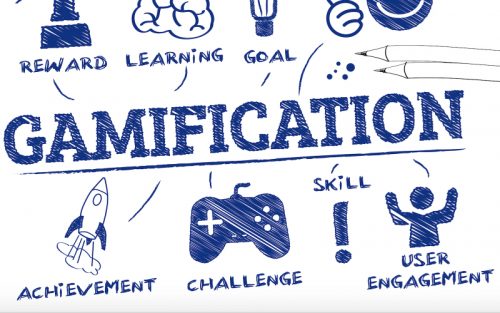16/05/2017 • 4 min read
Gamification of Education
The idea of gamification, or gamifying education, is really exactly as it sounds: the application of typical game elements, such as point scoring and rules, to the classroom. It seems a silly notion to many, who picture education simply turned into a game, with students levelling-up or collecting badges. Even those that see the benefits will often find such a drastic shift too big of a commitment. However, gamifying learning does not have to entail a huge shift away from regular teaching. In fact, small adjustments can lead to teachers reaching out to students, engaging them in ways that suit their individual style.
There’s no doubt that potential benefits are there. As described by The Education Arcade at MIT, gamers regularly exhibit positive qualities: perseverance, problem-solving, attention to detail and risk-taking. It’s safe to say that most teachers would identify these as key qualities for academic and professional success. If we were able to translate these traits from gaming into education, students could end up navigating life with more intention, more stamina, more excitement and more results.
According to the Institute for the Future, California, one way we can help our students gain these skills is by harnessing gaming elements in the classroom. That’s fine, but if you’re like me, knowing where to start is daunting. To help you get your game on, I’ve outlined several of the qualities that make games so appealing, and then made suggestions about how those can be applied to a secondary classroom.
Progression: Visibly incremental success
The status quo is something nobody enjoys. Very often in education, although students are making progress, it can be difficult for them and their teachers to see it happening and track it. This is discouraging rather than motivating, but can easily be managed with a few simple planning tricks. By setting simple, yet challenging tasks with various difficulty levels over time, you can easily plot progression, and show the evidence to students to motivate them further. You don’t have to call it “levelling up” or “gathering experience points”, as long as you show them that they are now better than when they started. It can be done manually if you are proficient enough with excel/google spreadsheet, or you can use an LMS or a digital textbook to help you automate it.
Competition: Leaderboards and tables
Another easy way to gamify learning is by playing on the idea that everyone loves to see their name on a leaderboard. You can craft a tournament module to offer a visual representation of student achievement. It encourages students to get excited about demonstrating their learning, and also offers alternative motivation for introverted students who aren’t as inclined to raising their hands.
Reinventing the gold star: Award badges for achievements
While initially this may bring back memories of Kindergarten sticker charts, rest assured, it has proven beneficial even at college level. When students accomplish tasks and meet goals, offer them a figurative (or literal) badge. Students at Khan Academy receive points and badges to track progress and increase motivation. Badges should correlate with authentic tasks and also carry value, such as skill levels and bonus points.
This seems so far out of what my curriculum allows me to do…
Yes, it may be that this is not applicable for you. It seems a bit childish to turn learning into games. However, this text is not a strict manual, but a first draft – the point is to spark ideas and creativity. Teaching is not a static, one-size-fits-all practice. Therefore, it is important to take a step back once in awhile and think outside the box. That’s the challenge many teachers face today and gamification of learning is just one of many methods that can be used to alternate learning throughout a student’s academic career.
Blog articles




